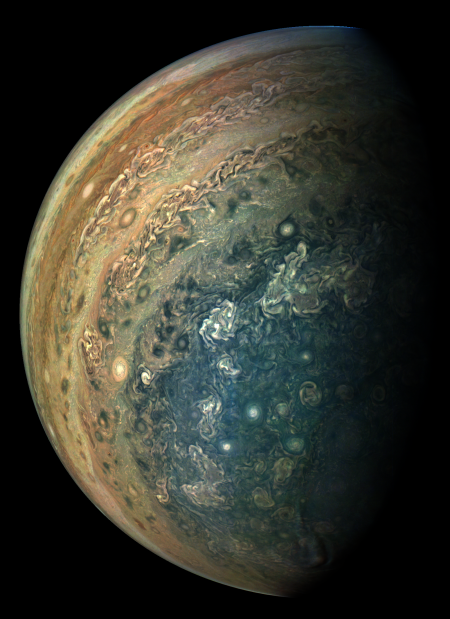Saturn’s magnificent rings

The Cassini science team released two sets of images taken by the spacecraft of Saturn’s rings.
The image above, reduced in resolution to show here, is from the second link. As they note,
The pale tan color is generally not perceptible with the naked eye in telescope views, especially given that Saturn has a similar hue.
The material responsible for bestowing this color on the rings—which are mostly water ice and would otherwise appear white—is a matter of intense debate among ring scientists that will hopefully be settled by new in-situ observations before the end of Cassini’s mission.
The different ringlets seen here are part of what is called the “irregular structure” of the B ring. Cassini radio occultations of the rings have shown that these features have extremely sharp boundaries on even smaller scales (radially, or along the direction outward from Saturn) than the camera can resolve here. Closer to Saturn, the irregular structures become fuzzier and more rounded, less opaque, and their color contrast diminishes.
Check out both. They reveal to me that our understanding of these rings remains essentially nil, even after more than a dozen years of study by Cassini.

The Cassini science team released two sets of images taken by the spacecraft of Saturn’s rings.
The image above, reduced in resolution to show here, is from the second link. As they note,
The pale tan color is generally not perceptible with the naked eye in telescope views, especially given that Saturn has a similar hue.
The material responsible for bestowing this color on the rings—which are mostly water ice and would otherwise appear white—is a matter of intense debate among ring scientists that will hopefully be settled by new in-situ observations before the end of Cassini’s mission.
The different ringlets seen here are part of what is called the “irregular structure” of the B ring. Cassini radio occultations of the rings have shown that these features have extremely sharp boundaries on even smaller scales (radially, or along the direction outward from Saturn) than the camera can resolve here. Closer to Saturn, the irregular structures become fuzzier and more rounded, less opaque, and their color contrast diminishes.
Check out both. They reveal to me that our understanding of these rings remains essentially nil, even after more than a dozen years of study by Cassini.



